This was published 6 years ago
Ernest Hemingway's Havana: Vibrant and soulful Cuba
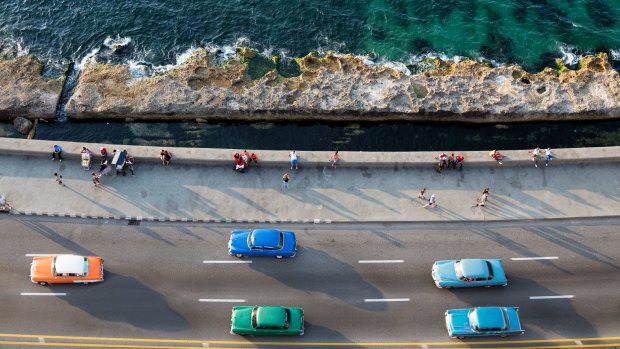
Cars speeding along the Malecon in Havana.Credit: iStock
Nobel Prize-winner Ernest Hemingway was revered for his uncompromising prose, including the Pulitzer Prize-winning short masterpiece, The Old Man and the Sea. But his final years in Cuba, soaked in booze and bombast, could have been titled "Old Man and the Sea of Alcohol".
Havana's colourful, sometimes disreputable environs make a fitting backdrop to the last years of the literary lion who engineered his own absurd myth of indomitable machismo.
A five-hour flight from the Brazilian Amazon has brought us to Cuba's lovely 500-year-old capital as part of our Captain's Choice private jet three-week South American tour. Argentina, Brazil, Panama, Ecuador, Peru and Chile's Easter Island are all on the agenda.
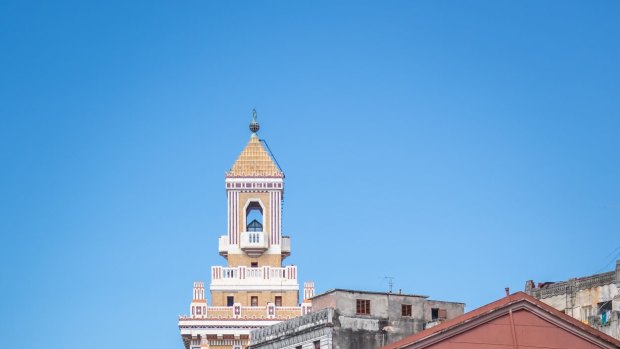
A vintage car passes Floridita restaurant in Old Havana.Credit: iStock
This gorgeous, complicated country is a highlight, not least for the fascinating Hemingway connection. The writer in equal parts repelled with his chauvinism and captivated with his unadorned, unique style and passion.
Hemingway's Havana leaps at the visitor – vibrant and soulful – a physical reminder both of his virtuosity and his ultimately futile grandiosity. In the end, the man fondly nicknamed "Papa", who considered himself a "Cubano sato" – a garden variety Cuban – deteriorated into mental illness and alcoholism. In 1961, he took his own life in a cabin in Idaho after his family encouraged his return to the US.
Havana is sensory overload – lively, gracious citizens still proud of their revolutionary history, spontaneous bootscoots of cha cha and samba, a palette of neoclassical, colonial and baroque buildings, the air thick with sounds of rhumba and salsa and car-horn conversations parping greetings along the lines of: "Maaate … long time, no see!"
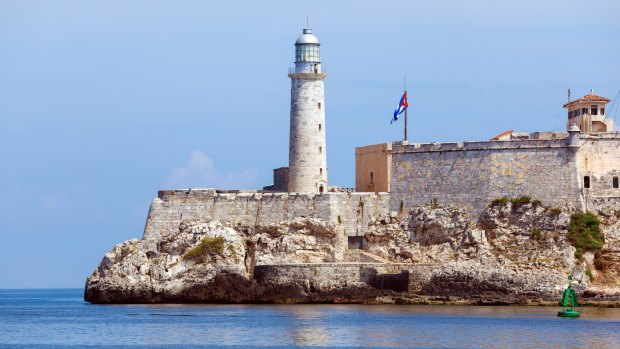
The Cuban flag fluttering on the Morro Castle, which guards the entrance to Havana Bay, alerted Ernest Hemingway to the arrival of the trade winds bringing perfect marlin-fishing conditions. Credit: iStock
No wonder Hemingway fell for this place, in the same way he fell for Spain and Paris – not just for its substance but also for its vibrant soul.
Our Hemingway tour offers an insight into the writer's Cuban years – almost 22 of them – his most productive time, before he slipped into his final paranoia.
Here he completed For Whom the Bells Toll, The Old Man and the Sea and A Moveable Feast. He also wrote Across the River and Into the Trees and Islands in the Stream, set partly in Cuba, and an unfinished novel, The Eden Garden.
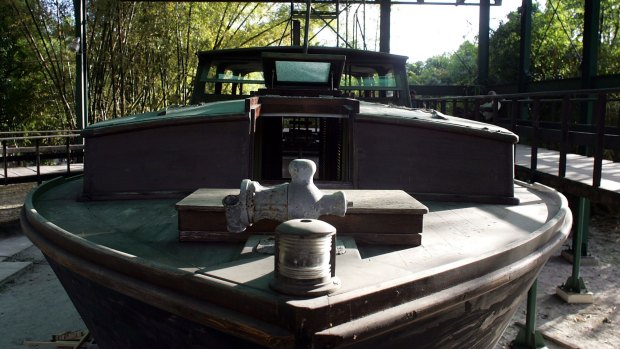
Ernest Hemingway's fishing boat named "Pilar" located at the Finca VigIia, or "Lookout Farm," his home from 1939 to 1960.Credit: Getty Images
His writing documented an adventurous life obsessed with "beautiful passion" as well as a curiosity about death, spanning four marriages, two world wars and a Spanish civil war.
We plunge into Old Havana to go where Hemingway went. He first came to Cuba in 1928, returning in 1932 to fish for marlin, and then settling here in 1933.
"I love this country and I feel like home," he wrote. "And wherever a man feels like home, apart from the place he was born in, that's the place he was destined to be." Cuba, he believed, nurtured his craft: "I always had good luck while writing in Cuba."
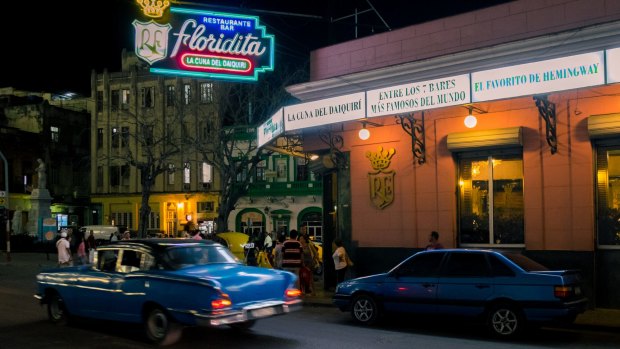
Vintage car passing by at night next to the famous Floridita bar in old Havana.Credit: iStock
We visit the pink Ambos Mundos Hotel in Obispo Street, where Hemingway regularly stayed in the same fifth-floor guestroom. From there, he could see the cathedral and the port where his boat, the Pilar was docked. The Cuban flag fluttering on the Morro Castle, which guards the entrance to Havana Bay, alerted him to the arrival of the trade winds bringing perfect marlin-fishing conditions.
Today, gazing up at the hotel facade, it's easy to trip over the groups of people clustered in the gutters taking advantage of the hotel's Wi-Fi hotspot. Cuba still has notoriously bad internet.
A short, stagger-distance away at the end of Calle Obispo near the National Museum of Fine Arts of Havana is El Floridita, where Hemingway swallowed daiquiris like water. We swallow one too, leaning on the bar beside the writer's life-sized bronze statue. It's packed, naturally, with Cubans and tourists living Hemingway vicariously.
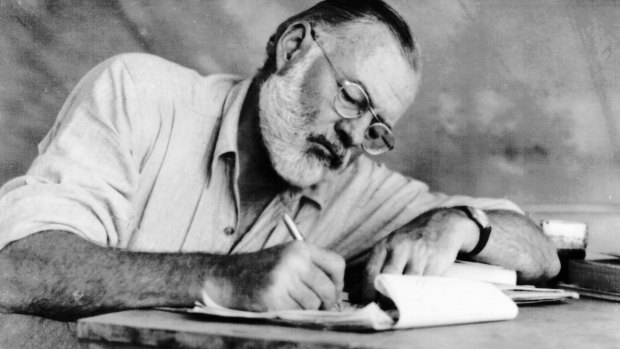
Ernest Hemingway.Credit: supplied
We're supposed to troop off to La Bodeguita del Medio, Hemingway's mojito haunt, where he wrote on the wall: "My mojito in La Bodeguita, my daiquiri in El Floridita." If only he'd stopped at one. But the ridiculous humidity and heat has brought on torrential rain.
We've already had a couple of mojitos at a nearby bar, where the Cuban music has caused our tour group to launch into a rambunctious outbreak of "rhumba-ing" and "cha cha cha-ing". It's like Shirley Valentine in Havana – cast off the inhibitions and live a little!
We depart Old Havana and drive the 15-odd kilometres to Finca Vigia, in the Havana suburb of San Francisco de Paula. Hemingway and his third wife, Martha Gelhorn, bought the bungalow in 1940 – his only "real" home.
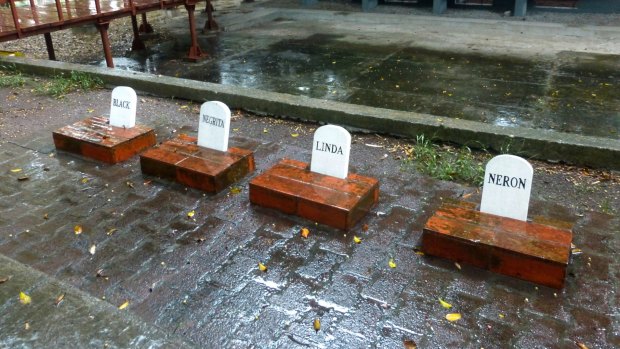
Havana Ernest Hemingway's dog graves at his bungalow.Credit: Alison Stewart
It was to Finca Vigia that he invited politicians, writers, world leaders, but his best friend was the captain of the Pilar.
When he won the Nobel Prize in 1954, Hemingway said: "This is a prize that belongs to Cuba, because my work was both thought up and written in Cuba."
His friend and admirer, Fidel Castro, proposed a museum for the house after his death. It's the home of an artist – beautiful in a shambling, aesthetically pleasing way, though we must peer through the rain-streaked windows as it is closed. His "room of his own" is an eyrie with a steep staircase where the master created his masterpieces.
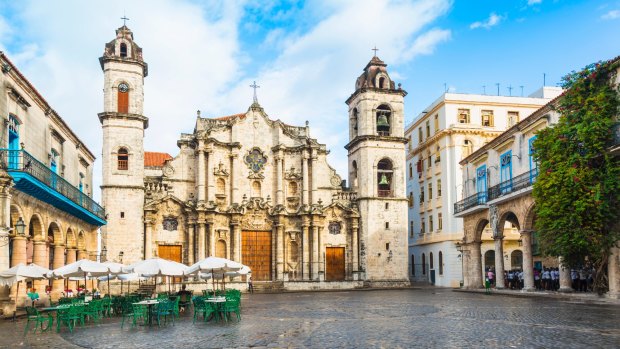
The large Cathedral of Havana in Cuba sits in an empty square.Credit: iStock
But a real insight into his character comes as we troop through the lovely tropical garden, arriving at his boat, the Pilar, now high and dry, alongside a touching little row of headstones neatly inscribed "Black", "Negrita", "Linda" and "Neron" – his beloved dogs. In the end, he was, after all, just a man.
TRIP NOTES
MORE
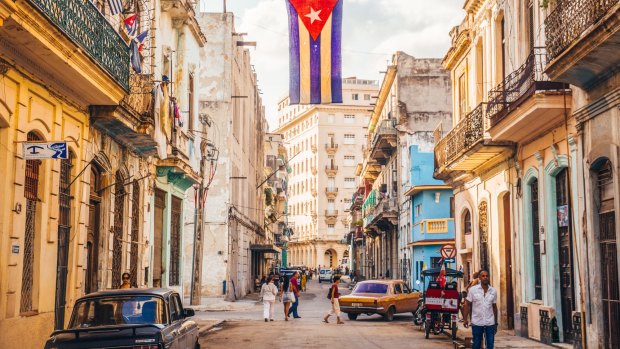
A Cuban flag waves over a street in central Havana. Credit: iStock
TOUR
Captain's Choice Discovery of South America is a 22-day journey by private jet from Sydney to Buenos Aires, Iguassu Falls, Rio de Janeiro, Havana, Machu Picchu, Panama City, the Galapagos Islands, Cuzco and Easter Island. Departs Sydney on August 23, 2018, and is priced from $89,500 per person twin share. See captainschoice.com.au or call 1800 650 738.
Alison Stewart was a guest of Captain's Choice
Sign up for the Traveller Deals newsletter
Get exclusive travel deals delivered straight to your inbox. Sign up now.